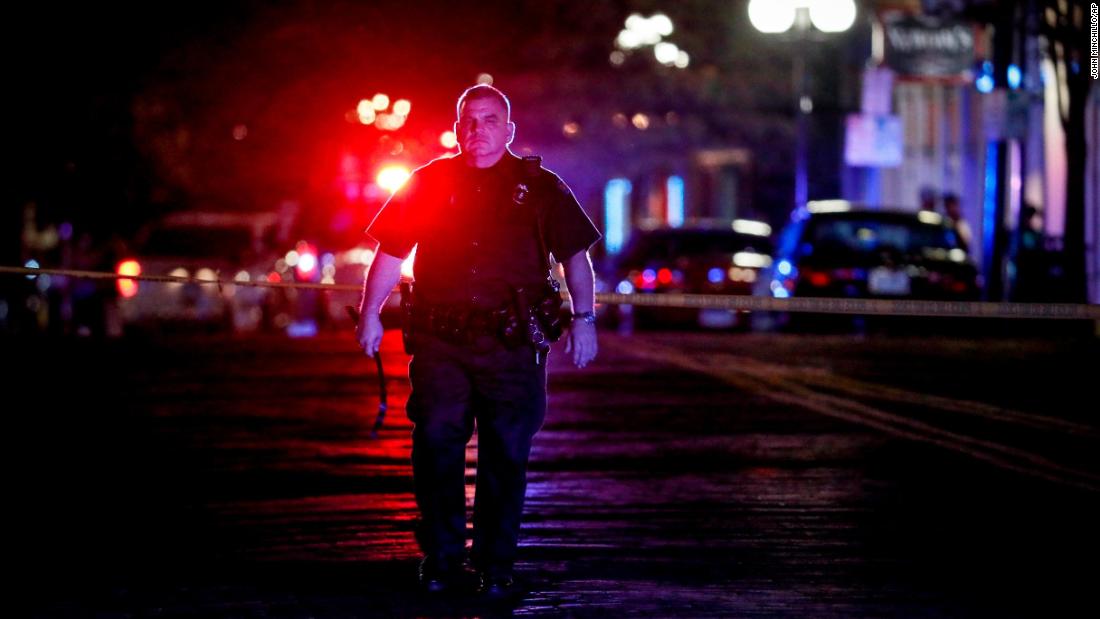[ad_1]
Schweit says when it comes to preventing incidents of mass violence, community involvement is key.
What to look out for
People talk themselves out of reporting, or even believing, such red flags for various reasons. They include a fear of being wrong, a reluctance to involve police or just not knowing whether anything can be done, law enforcement experts said.
To report suspicious behavior, one has to know what to look for — and it’s not a profile, a religion, a race, or diagnosis, Schweit said.
“Even though these shootings generally are almost exclusively committed by a single individual, that person is often mistakenly characterized as a ‘loner’ but rarely is that true. It’s also inaccurate to say that this is a person who must have mental health issues or plays too many video games, we know from research that’s not true,” said Schweit. “That begs the question: what are we looking for?”
Observable, unusual behaviors, said Schweit. Those closest to people who may commit violence know what behaviors are unexpected for that individual.
Perhaps it’s not unusual for a person to have a weapon, but it might be alarming if that person is acquiring a large amount of ammunition, tactical gear and a bulletproof vest. Perhaps they are focused on prior shootings, more so than they ever have. Perhaps they are giving their belongings away in a quantity and at a speed that are unexpected.
And often, perpetrators of mass violence will even say something leading up to their attack to make a direct threat or justify the actions they are about to take, said Las Vegas Metropolitan Police Department Lt. Dori Koren, whose team is responsible for taking tips from the community.
“These are planned incidents, and planned incidents give us an opportunity to intercede,” Schweit said.
Where to report it
When it comes to an urgent threat, local law enforcement is the best place to go, Koren said. His team is tasked with sifting through tips and leads and delegating the credible ones to the appropriate unit. The FBI is a partner in these investigations, but local departments are often the first law enforcement response.
In cases involving behavior that indicates someone is struggling, and not necessarily planning an attack, law enforcement may not be the first place to go. Community leaders, counselors and mental health professionals are often a better preventative resource, he said.
The most important thing is to make the concern known, Schweit said.
“If you can’t report to the police, report to HR, report it to the boss, report it to the pastor, to the rabbi, to the teacher,” Schweit said. “You have no idea sometimes how relevant the tiniest piece of information can be.”
What can be done
Koren compared the mindset that leads someone to commit mass violence to a highway with on-ramps and off-ramps. Law enforcement can’t control how many on-ramps are on the road, he said. So, he sees his job as creating as many off-ramps as possible.
If police find evidence of a crime or a credible threat, an arrest can be one of those exits. But those off-ramps can come before a crime and are not always limited to arrests.
They include getting community leaders, school administrators, friends and family involved. It can be connecting someone with a counselor or mental health professional to help bring that person out of that dangerous state of mind, a method Koren said he has seen work to de-escalate situations frequently.
“I’ve seen it work on individuals who have threatened to commit mass shootings or mass attacks and there was never enough evidence to arrest that individual. We worked with health professionals and we were able to build an off-ramp for that individual and, at least for the time being, they were no longer a threat,” Koren said.
Sometimes just stepping in and informing the individual that officers are aware of the potential attack, thereby disrupting their plan, is enough to derail it.
It’s important in prevention that those in the public don’t discount what they are seeing for fear of it not being credible, Koren said.
“We have had several instances where we legitimately prevented a very significant school shooter or a very significant mass attacker or a very significant racially motivated or religious motivated active shooter. In many cases the way that was prevented was assistance from the public,” Koren said.
The limitations
Even with the available intervention methods, there’s a thin line between preventing crime and infringing an individual’s civil liberties.
And though Koren says departments like his will run leads from the smaller suspicions to the most immediate concerns into the ground, state laws and the Constitution regulate how — and what — officers investigate. The expression of a belief is not probable cause to invade someone’s privacy.
“Someone can say they hate the government or they hate police or they can even go so far as to say the government should cease to exist or whatever belief they have, that’s the right of being an American,” Koren said. “It poses a challenge for us as a society sometimes, but that is part of the very way we manage a free society.”
People cross the line when they go from expressing grievances to planning violence. Then, Koren said, it becomes a police issue.
Most of the tips that come in to his department are found to be innocuous, Koren said. But that doesn’t mean they are not worth reporting.
It’s the community’s job to make the observations, and law enforcement can put together a bigger puzzle.
“You may not know that your piece matters, but it does,” Schweit said.
State and federal officials get millions of tips all year, and anything falling through the cracks can lead to a major catastrophe, she added.
[ad_2]
Source link



